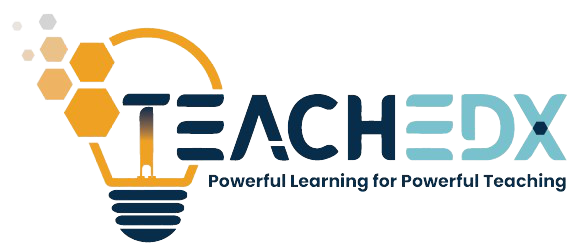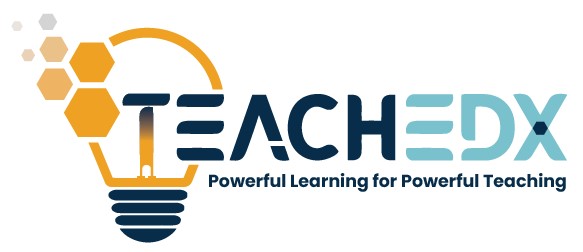Unlearning to Teach: New Year, New Strategies
- Venessa Powell
- January 1, 2024
- No Comments
Unlearning to teach in the new year requires using new strategies. As we begin a new calendar year and a new school term, it’s the perfect time for us to revisit our teaching methods. We need to consider implementing fresh strategies to enhance student learning. If we pause to reflect deeply enough, many of the strategies we have been using are outdated. They are the same ones we have learned (indirectly) from our teachers during primary or high school. This happens because we have not taken the time to keep abreast of research-based alternate strategies in the subject. Nor have we experimented with them to hone our practice. Would you allow your doctor to use the same surgical methods he learned during medical school in the 1980s on you today, in 2024, given the advances made in the field?
Teaching in the 21st century requires us to facilitate learning experiences that help students move beyond mere regurgitation of content. They must learn the fundamental concepts within the discipline so that they can apply the content in a variety of contexts. It is no longer enough for us to plan lectures or take students through I-do-we-do-you-do textbook exercises. Students must actively engage in their learning. In this blog post, I’ll share with you five teaching strategies that can help us transition from traditional teacher-centred instruction to a more student-centred approach.
New Strategies
1. The Flipped Classroom Model
The flipped classroom model is an approach that reverses the traditional roles of in-class and at-home activities. In the flipped classroom, teachers create instructional videos or curate online resources for students to engage with outside of class. This allows for more interactive and collaborative activities during face-to-face sessions. By doing so, teachers can dedicate more classroom time to hands-on projects, discussions, and personalized assistance. This approach encourages self-directed learning and enables teachers to cater to individual student needs. For example, students may be required to watch a YouTube video describing the parts of the eye and their function. They could also watch videos of how the eyes of different animals behave in different environments. During class, the discussion would require students to debate how changes in specific parts are likely to affect a person’s sight in particular environments.
2. Project-Based Learning (PBL)
Project-based learning is a student-centred pedagogy that emphasizes learning through real-world, interdisciplinary projects. I am a huge fan of this one. I believe that students must see the utility of their schooling in real-world contexts. By assigning tasks that require critical thinking, problem-solving, and creativity, teachers can foster a learning environment where students take ownership of their education. PBL encourages collaboration, communication, and exploration. It empowers students to delve deeply into subjects and develop a deeper understanding of the material. Teachers act as facilitators, guiding students through the process and providing support as needed. For example, teachers could have students integrate their knowledge from the Language Arts, Mathematics, Social Studies, and Science to create a proposal for a waste management system for their community. The su ccess criteria should clearly outline how each discipline is expected to be visible within the final product.
3. Mystery-Based Learning
Mystery-based learning is a captivating approach that introduces an element of intrigue and suspense into the classroom. Teachers can design complex, multi-step challenges or mysteries related to the subject matter that require students to apply critical thinking, problem-solving, and collaboration to unravel. For example, in a history/social studies class, students could investigate a historical event through a series of clues and primary sources, ultimately piecing together the story and drawing their conclusions. Similarly, in a mathematics class, teachers could have students test clues about geometric concepts using dynamic geometry software (such as Geogebra) to determine the essential and non-essential conditions for different types of shapes. This approach not only makes learning fun and engaging but also fosters skills such as deductive reasoning and analysis.
4. Gamification of Learning
Gamification involves integrating elements of game design and mechanics into the learning process. Teachers can create educational games, quests, or challenges that motivate students to actively participate in their learning. For instance, a language arts teacher might develop a vocabulary-building game where students earn points, badges, or rewards for mastering new words. By incorporating competition, teamwork, and immediate feedback, gamification can significantly enhance student engagement and motivation while reinforcing learning objectives in an enjoyable and interactive manner.
5. Experiential Learning through Simulations
Simulations provide students with hands-on, immersive experiences that replicate real-world scenarios relevant to the curriculum. The simulations I refer to here go beyond the typical skits we include to check the ‘creativity’ box. I’m referring to simulations where students have to demonstrate a deep and flexible understanding of the content by applying it in a novel situation. For example, in a science class, students could participate in a simulated agricultural experiment, complete with roles for farmers and scientists, allowing them to apply scientific principles in a practical context such as farming in a geographical area with a particular soil profile. Similarly, in a social studies class, students could engage in a historical reenactment or model United Nations simulation to gain a deeper understanding of global issues and diplomacy. By immersing students in realistic, interactive experiences, simulations can foster critical thinking, empathy, and a deeper appreciation for the subject matter.
New Year: The Way Forward
We cannot continue to do the same things we’ve always done and expect different results. The new year presents an opportunity for us to embrace fresh teaching strategies that prioritize student-centred learning. By adopting approaches such as the flipped classroom model, project-based learning, mystery-based learning, gamification, and simulations, teachers can create dynamic, engaging learning environments that cater to the diverse needs of their students. Furthermore, the integration of technology, such as artificial intelligence (AI) and collaborative tools, can empower students and foster a sense of ownership over their education within the Jamaican (and Caribbean) education system. As we embark on a new year, let’s commit to evolving our teaching practices to better serve the needs of our students and inspire a love for learning.
Which of these new teaching strategies do you plan to try in the new year?
You may also find these articles useful:
Like this article?

Venessa Powell
I never wanted to become a teacher. As a matter of fact, anybody who knew me knew that I was set on becoming a graphic designer. Some would say it was by divine intervention others may call it the universe redirecting me, but circumstances led me to teachers’ college at the end of high school where I pursued secondary mathematics education.


